Volume of a Square Box – Formula, Definition With Examples
reviewed by Jo-ann Caballes
Updated on October 8, 2024
Welcome to Brighterly, where we help kids learn math in an exciting and engaging way.
As part of our series on 3D shapes and geometry, we’ll be covering the volume of a square box today.
This will include the definition of a square box (aka a cube) and its volume, the formula for how to calculate the volume of a box and some practice and solved questions to support your learning.
What is a square box?
A square box, more commonly known as a cube in mathematics and geometry, has six equidistant square faces, meaning they’re of equal distance apart from one another. Each square face is identical and they house within them a space that accounts for the square box’s volume.
Each face on a square box forms a 90-degree angle with its adjacent faces, creating a symmetrical and equally balanced shape with length, breadth and height all the same length. The distance from any corner or face to their opposing corner or face is equal, and every single corner is a right angle.
Square boxes can be found all around us, from building blocks and dice to rubix cubes and gift boxes. Thanks to their uniform and symmetrical shape, they often form the building blocks of larger cubes or cuboids.
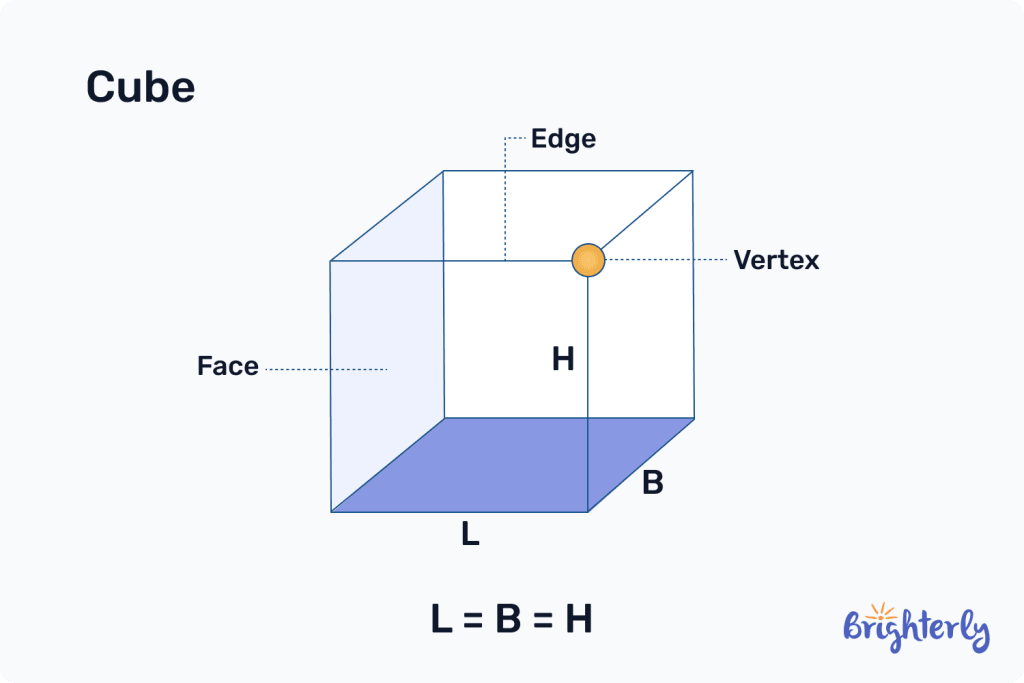
What is volume?
Volume represents the space inside a 3D shape like a square box. If the shape is empty, the volume tells us how much room there is available to fit water, air or other objects into it in cm3 (cubic centimeters) or m3 (cubic meters). It can also be described as the amount of space that is enclosed in a container.
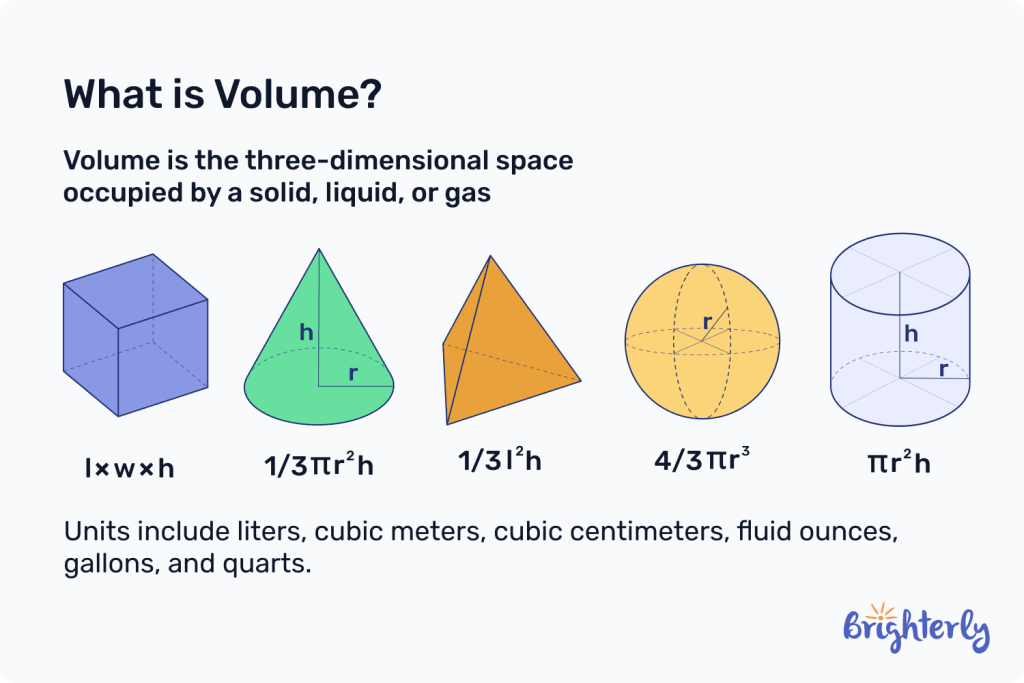
What is the volume of a square box?
The volume of a square box represents the space available inside the square box. It can be helpful to visualize the volume of a box as smaller square boxes of a cubic centimeter or meter.
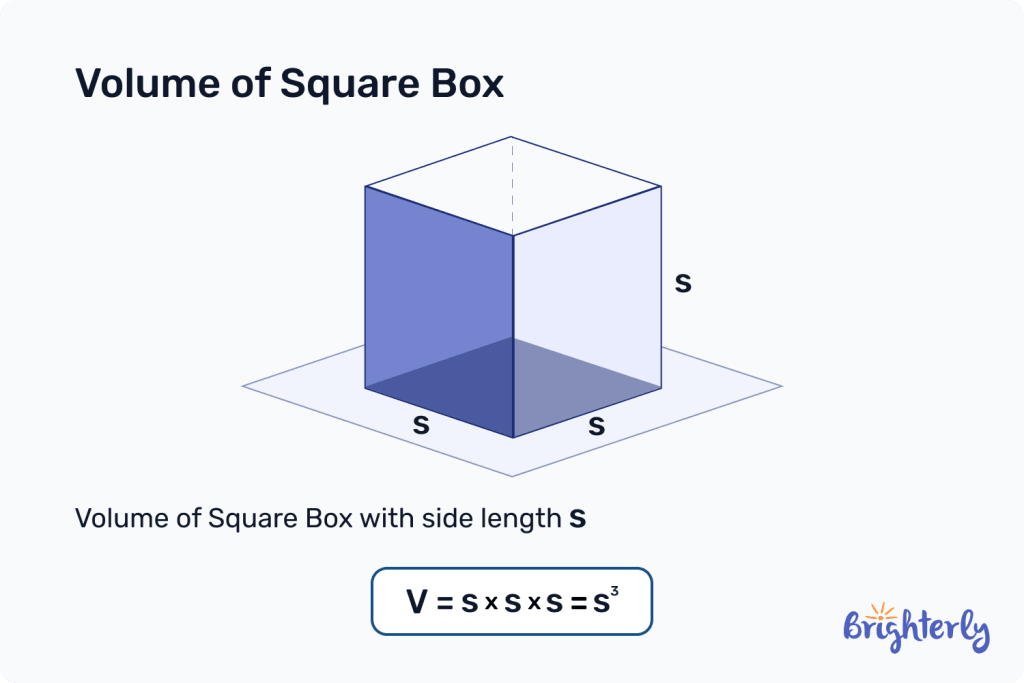
Volume of a square box: definition
The volume of a square box is defined as how much we can fit into the box in cubic meters or centimeters. All you need to know to work out the volume of a square box is the length of one of its sides. We’ll cover the formula for the volume of a box in our next section.
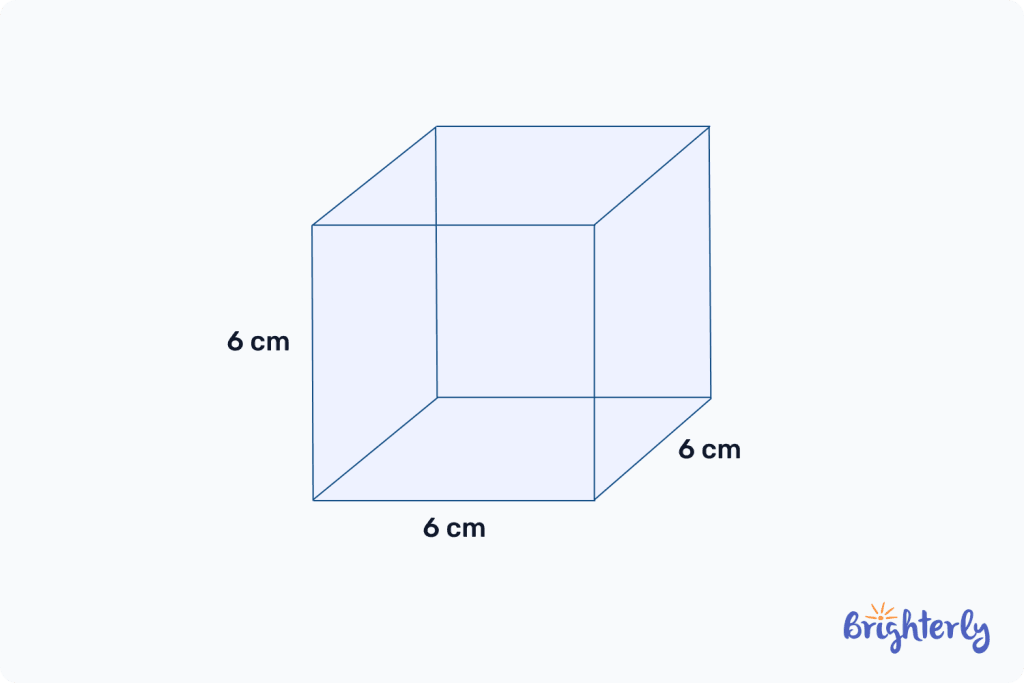
Volume of a square box formula
The volume of a square box formula is straightforward: v = s3.
In the formula for the volume of a box, v represents the volume, and s represents any side – and because all sides are the same length, you can choose any of them!
The volume of a box formula can also be written as: v = length x length x length.
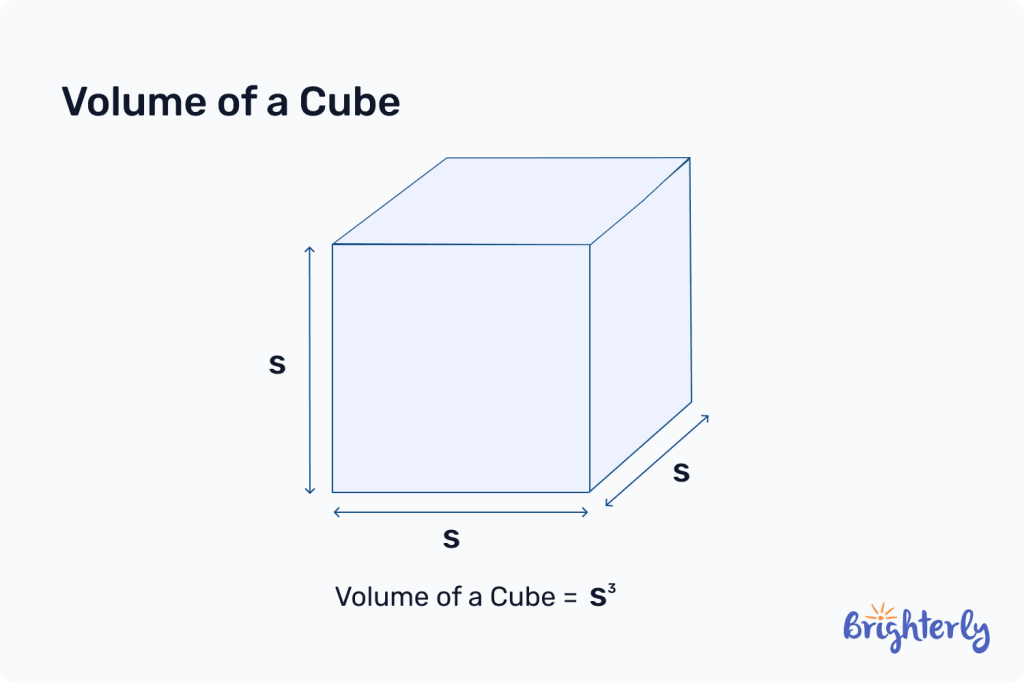
How to find the volume of a square box
You can find the volume of a square box using one of the two volumes of a box formulae above, which both represent the same calculations and give the same results. Use this quick two-step process to easily calculate the volume of a box:
- Calculate the length of any of the sides in your square box.
- Multiply that length by itself three times (aka cube it) and that’s your answer.
For example, if we had a square box with sides of 5cm, your sum would be v = 53 or 5 x 5 x 5. The answer to both is 125cm3.
Difference between volume and surface area of a square box
Volume and surface area are both properties that relate specifically to 3D shapes, and you’ll probably learn about them both at the same time. But it’s important to note that there are distinct differences between the two properties.
The volume of a 3D shape refers to the available space inside the shape. It can represent how much volume, air or other objects we can fit inside the shape. It only refers to the inner part of the shape.
The surface area of a 3D shape refers to the outer surface of the shape. It’s the combination of the total area of all faces of the shape – and in the case of a square box, covers the area of all six faces combined. It refers only to the outer part of the shape. The formula for the surface area of a square box is surface area = 6a2. In this formula, a represents any side of the cube.
Real-life examples of square boxes
Square boxes and their volume aren’t just mathematical concepts. In fact, we can see them everywhere in the world around us! Real-life examples of square boxes include:
- Dice
- Gift boxes
- Rubix cubes
- Sugar cubes
- Ice cubes
- Building blocks
- Storage containers
Why is a square box also called a cube?
In mathematics and geometry, you’re more likely to hear a square box referred to as a cube – that’s its proper mathematical term. Using the term ‘square box’ makes it easier to visualize a cube, and that’s where it gets this extra name from – because a cube is essentially a box made up of six equal squares.
Volume of a square box: solved examples
Here, we’ve included some solved examples of math problems related to the volume of a square box. See if you can answer them yourself before checking the answer and our workings out to see if you’re correct!
Solved example 1
If a square box has a side length of 4cm, calculate the volume of a box with these side lengths.
Answer:
| 64. |
4 x 4 x 4 (or 43) is 64.
Solved example 2
A large cube-shaped gift box has a side of 30cm. Find the volume of a square gift box with this side length.
Answer:
| 27,000. |
30 x 30 x 30 (or 303) is 27,000.
Solved example 3
Imagine a tiny cube with a 2mm side. Find the volume of the box.
Answer:
|
8. |
2 x 2 x 2 (or 23) is 8.
Volume of a square box: practice math problems
Volume of a square box: worksheets
Brighterly offers a range of math worksheets on the topic of volume and 3D shapes to help you put your newfound volume of a square box knowledge to the test.







